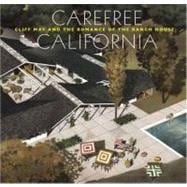Carefree California: Cliff May and the Romance of the Ranch House

Carefree California: Cliff May and the Romance of the Ranch House
- ISBN 13:
9780847837823
- ISBN 10:
0847837823
- Format: Hardcover
- Copyright: 09/04/2012
- Publisher: Rizzoli
Rent
Sorry, this item is currently unavailable.
Note: Supplemental materials are not guaranteed with Rental or Used book purchases.
Extend or Purchase Your Rental at Any Time
Need to keep your rental past your due date? At any time before your due date you can extend or purchase your rental through your account.
Summary
The writers concentrate mainly on the person considered to be the father of the California ranch, Cliff May, whose houses are unique in fusing elements of the Spanish hacienda style with modernism in the creation of the western ranch house so well known today. The texts place the more than 1000 homes to May's credit in the context of the times through looking at the work of twenty other important figures of the period in California, such as Irving Gill, George Washington Smith, Gregory Ain and Rudolf Schindler. The book opens at the height of the great housing boom of the 1920s, with the arrival of a generation of new architects in the region and with the wide-ranging search among designers to locate simple, authentic sources for a regional architecture that moved away from the prevailing identification of the land of sunshine with its Craftsman bungalows, monumental Mexican traditions, or the vaguely Mediterranean house conventions that had come to be called Spanish. The newly-arrived architects, Cliff May among them, were interested in uncovering and adapting traditions of design that replaced those colorful myths with something still coloured by romance but markedly more true to the remnants of cultures left around them. The book traces the long dialogue between modernity and history in the planning, articulation, and ideas that informed designers' work on the dwelling. It is focused on the particular house type - the California ranch - that came to stand not just for the culture of the region but for an entire American era and its aspirations toward freer manners and an emancipated way of life and follows its transition from a low-slung luxury recollection of historic adobe, brick, tile, and stucco, to the modest wood and glass tract house of the forties, to the near-minimal system built ranches May designed and sold in the late 1950s.






